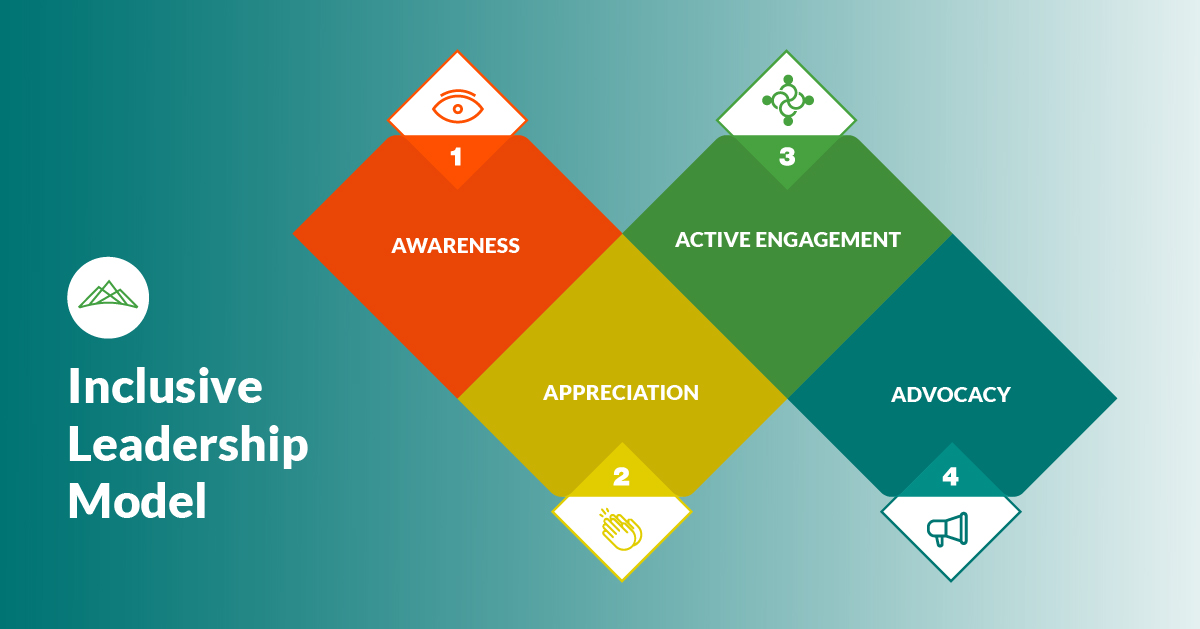Inclusive Leadership: A Journey, Not a Destination
 Organizations are realizing both the financial and societal benefit of increasing their investment in Diversity, Equity, and Inclusion (DEI) practices. However, when deciding where and how to invest in DEI initiatives, not every approach realizes the same outcomes. In our experience, leadership behaviors and setting the tone for the organization are far more impactful than diversity initiatives, training, and posters on the wall. We recently conducted a study with 200 CEOs and 95% of them listed DEI as a key focus area over the next couple years, however, 44% have yet to develop a formal strategy in their company.
Organizations are realizing both the financial and societal benefit of increasing their investment in Diversity, Equity, and Inclusion (DEI) practices. However, when deciding where and how to invest in DEI initiatives, not every approach realizes the same outcomes. In our experience, leadership behaviors and setting the tone for the organization are far more impactful than diversity initiatives, training, and posters on the wall. We recently conducted a study with 200 CEOs and 95% of them listed DEI as a key focus area over the next couple years, however, 44% have yet to develop a formal strategy in their company.
A recent review of DEI practices across 800 organizations confirmed our experience in driving DEI change, as the study found the most powerful approaches to drive inclusion and diversity come from the business strategy, not HR programs (Bersin, 2021). In addition, they found that senior leader commitment is essential to drive successful DEI outcomes.
Developing an inclusive culture begins with leaders showing a commitment to promote DEI through their actions. In a business environment that demands immediate results from resource intensive initiatives, organizations are looking for a panacea to drive inclusion across the organization. While members of underrepresented groups are understandably impatient for real progress to be made, it would be foolish to assume that we can solve these systemic issues as a country, community, or organization overnight.
We cannot take a shortcut in developing CEOs and senior business leaders who in turn drive inclusive organizations. The journey to becoming a more inclusive leader is a thoughtful and often uncomfortable path of self-awareness and learning through experiences and can be moderated by context specific constraints.
Given this reality, Summit Leadership Partners has assembled vast research, data, and our collective expertise in advising Boards and the C-suite to codify the most crucial components that incorporate personality, context, and experiences leading to inclusive leadership. This relevant and transformative leadership capability can be assessed for and developed in leaders at all levels of an organization. We modeled the journey from awareness to advocacy, identifying and developing inclusive leaders as a practice of skill and capability development. We have identified some general characteristics and behaviors of leaders who embody “inclusivity” and look on those as the foundational elements that help a leader become successful as they collect crucial experiences that help them become more inclusive. We definitively state that “inclusivity” is not a static, permanent state of being. Instead, we define inclusive leaders – or inclusive leaders in development – as works in progress. Specifically, we see leaders pass through four stages of inclusive development:
- Awareness: During this first stage, leaders are aware of diversity, equity, and inclusion and the opportunities that arise with including diverse thinking and perspectives. They recognize the privileges and barriers associated with specific groups and displays keen insight into their unique circumstances and background.
- Appreciation: In this next stage, a leader begins to show admiration and respect for diverse perspectives. They begin to truly value diversity and consider inclusive practices as a critical component to effective collaboration and innovative thinking. This leader remains open and humble and strives to learn more about different people, cultures, perspectives, and opinions.
- Active Engagement: In this third stage, a leader evolves to actively including people from underrepresented groups to be a part of activities and initiatives. They intentionally foster a psychologically safe environment where others feel valued and represented.
- Advocacy: In this final stage, the leader is comfortable acknowledging and calling out all forms of discrimination; will actively challenge their own and other’s assumptions and outdated practices that perpetuate inequities. They also remain resilient during tough conversations and act in an authentic manner that is aligned to values of equity and inclusion.
In most cases, the definition and context of “diversity” will be a moderating factor. In other words, some leaders may be at the advocacy stage for a specific group (for example gender diversity) but still be in the awareness stage for other types of diversity (like minority groups). However, once a leader has evolved through all four stages for a particular group or context, they will more likely move quickly through the evolution for other groups, as they become part of their context.
At Summit, our proven Inclusive Leader model can translate to an index to better understand where leaders fall on their inclusive leader journey and how they may build this capability. Additionally, we have identified targeted and tangible experiences that help individuals to build capabilities across each of these stages.
Hiring a more diverse workforce and developing diverse leaders is a start but building a culture of inclusion and belonging requires everyone’s involvement – especially among allies and sponsors with the potential to enact real change through their influence and investment. At Summit Leadership, we have a responsibility to partner with leaders to help them raise their awareness, show appreciation for diversity, actively engage others who have different backgrounds/perspectives, and advocate for others with action and conviction. We are incorporating our Inclusive Leader Index in our talent assessments, succession planning, and executive coaching of c-level executives. We are committed to improving inclusion and equity in the business world, one leader at a time.
1 Bersin, J. (2021, April 20). Elevating Equity and Diversity: The Challenge Of The Decade. JOSH BERSIN. https://joshbersin.com/2021/02/elevating-equity-and-diversity-the-challenge-of-the-decade/.